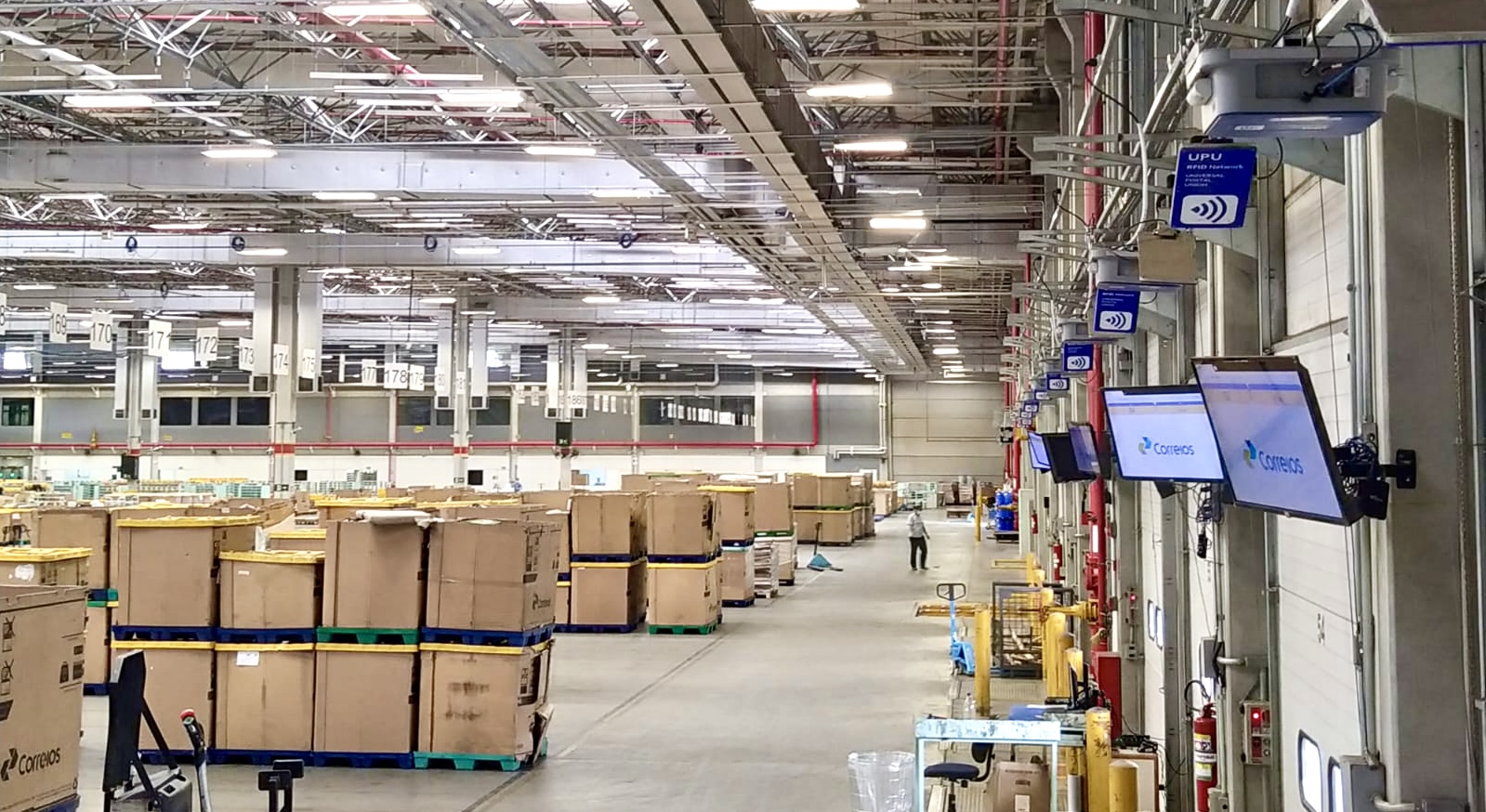Brazilian postal operator, Correios, has been working closely with the Universal Postal Union (UPU) and GS1, a not-for-profit organization dedicated to the design and implementation of global standards for visibility in supply chains, to improve tracking of postal cargo through its sorting hubs using UHF RFID technology.
Correios Brazil has implemented RFID tags on cargo containers, which hold hundreds of packages, and installed around 2,000 readers at the entry and exit points in operational units, to better track letters and parcels through its network. This has been done in partnership with the UPU via its Global Monitoring System program and GS1. The RFID tags include the GS1 Serial Shipping Container Code (SSCC) standard as postal item identifier.According to Correios, this is the first project worldwide for tracking postal cargo using UHF RFID technology. Correios has also decided to keep its established tracking process, which uses barcodes, alongside the new RFID system as some challenges regarding the roll out of RFID remain.
The UPU assisted Correios with the selection of the technology for RFID tracking to ensure procurement was done in the most efficient and cost-effective way. Therefore, passive RFID tags, rather than active, were chosen to keep costs low. Furthermore, thanks to the UPU’s partnership with GS1, Correios used tags with the most used standard (GS1 SSCC) for rapid adoption of the technology, even outside of the postal sector.
Through the RFID technology Correios can now track and manage cargo containers and their contents more accurately as they enter and exit distribution hubs – without the need to manually scan barcodes. Furthermore, certain mail items passing through Correios’ hubs also have their own RFID tags for better tracking. These tags use GS1’s Scan4Transport (S4T) standard, which is a new global standard for encoding transport data on a postal label. According to GS1, the S4T standard can capture the core data needed to help with first mile delivery, sortation, and last mile.
Correios customers can also purchase RFID labels for their own orders. One customer now trialing this is Brazilian shoe manufacturer Via Marte, which has inserted RFID tags using GS1 global standards, into its products for faster identification through Correios’s mail stream, and to minimize delivery errors.
Antonio Caeiro, Quality Measurement Programme Manager at the UPU said, “GS1 standards are used domestically, as required by Brazil Post, for the purpose of ensuring interoperability with domestic customers sending domestic items tagged with RFID via post. UPU standards are also in use to ensure interoperability between UPU member countries exchanging international items tagged with RFID.”
To date, Correios has purchased 27 million RFID tags encoded with GS1 SSCC keys. Those tags also have a GS1-128 barcode printed on it, which enables a “matching” process with the UPU’s S10 code at 237 Correios agencies. In the next tender, Correios will purchase the so-called “integrated label”, where the tags will encode a SSCC and have a S10 printed on them, which will eliminate the SSCC + S10 matching process established today.
The success of the Correios’ RFID project is in part thanks to the strong partnership the UPU and GS1 has developed over the past decade. In 2010 the two organizations signed a memorandum of understanding to look at developing an RFID-based automatic product identification system for the postal network. Over the years, GS1 has worked closely with the UPU’s GMS team to see how its standards could help with postal tracking.
Then in mid-2019, GS1 became an official member of the UPU’s Consultative Committee, which represents the interests of the wider postal sector and provides a framework for effective dialogue between posts and the UPU, and stakeholders, including NGOs, standardization and financial organizations, suppliers of goods and services to the postal sector, transportation entities, and other organizations which have an interest in supporting the UPU’s mission and objectives.
“The successful collaboration between GS1 and Correios, resulting in highly competitive and efficient solutions in e-commerce is a perfect example of how wider postal sector players, such as GS1, and designated operators, such as Correios, create value and increase the competitiveness of the postal sector”, added Walter Trezek, Chairperson of the UPU Consultative Committee.
On July 1, 2022, the Consultative Committee rolled out a new membership structure as part of the International Bureau’s aim to open the union to more private sector players and in turn help designated operators accelerate transformation through digitalization. Find out more about the new structure here.
